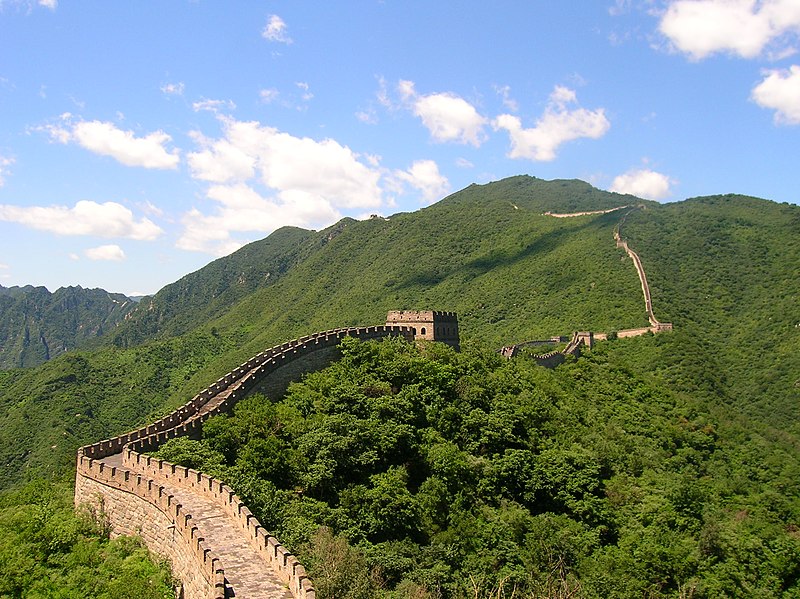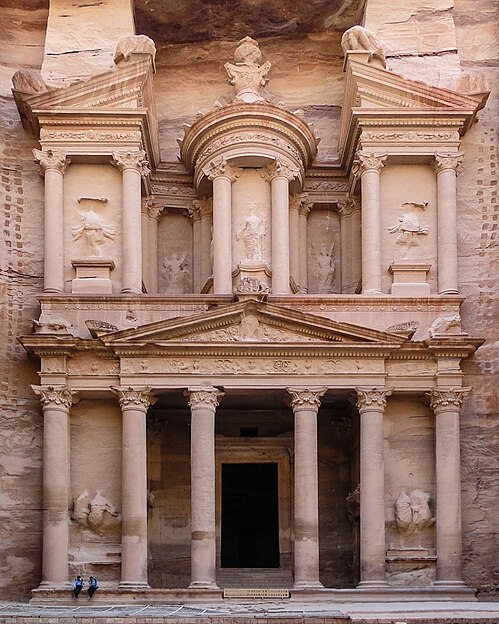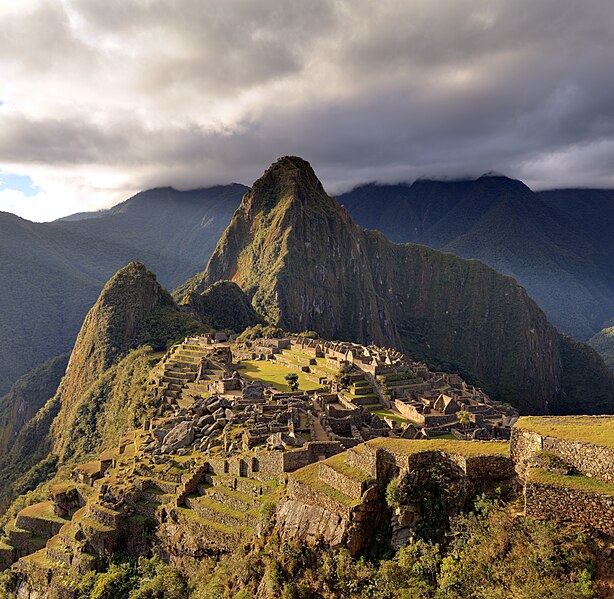Here u can read five top most usable spaces in the world,very interesting this article is it. you may read it first time.
The company was founded in 1902 as the Dayton Dry Goods Company, though its first Target store was opened in 1962 in nearby Roseville, Minnesota. Target grew and eventually became the largest division of Dayton Hudson Corporation, culminating in the company being renamed as Target Corporation in August 2000. On January 13, 2011, Target announced its expansion into Canada. Target will operate 100 to 150 stores in Canada by 2013, through its purchase of leaseholds from the Canadian chain Zellers.
The A380's upper deck extends along the entire length of the fuselage, and its width is equivalent to that of a wide-body aircraft. This allows for an A380-800's cabin with 478 square metres (5,145.1 sq ft) of floor space; 49% more floor space than the current next-largest airliner, the Boeing 747-400 with 321 square metres (3,455.2 sq ft), and provides seating for 525 people in a typical three-class configuration or up to 853 people in all-economy class configurations. The A380-800 has a design range of 15,400 kilometres (8,300 nmi; 9,600 mi), sufficient to fly from New York to Hong Kong for example, and a cruising speed of Mach 0.85 (about 900 km/h or 560 mph at cruising altitude).
As of November 2011 there had been 238 firm orders for the A380, of which 62 have been delivered.[3] The largest order, for 90 aircraft, was from Emirates.
1.Boeing Everett Factory:
The Boeing Everett Factory, in Everett, Washington, is an airplane assembly building owned by Boeing. Located on the northeast corner of Paine Field, it is the largest building in the world by volume at 13,385,378 m3 (472,370,319 cu ft) and covers 399,480 m2 (98.3 acres). It is where Boeing 747s, 767s, 777s, and the new 787 Dreamliner are built.
The factory includes a BECU branch, 5 Tully's Coffee stands (1 of which is in the delivery center), and several cafés. Across the airport to the west is The Boeing Store, a theater, and Future of Flight Aviation Center & Boeing Tour, which runs factory tours.
The Boeing Everett Factory, in Everett, Washington, is an airplane assembly building owned by Boeing. Located on the northeast corner of Paine Field, it is the largest building in the world by volume at 13,385,378 m3 (472,370,319 cu ft) and covers 399,480 m2 (98.3 acres). It is where Boeing 747s, 767s, 777s, and the new 787 Dreamliner are built.
The factory includes a BECU branch, 5 Tully's Coffee stands (1 of which is in the delivery center), and several cafés. Across the airport to the west is The Boeing Store, a theater, and Future of Flight Aviation Center & Boeing Tour, which runs factory tours.
2.Target Corporation :
Target Corporation, doing business as Target, is an American retailing company headquartered in Minneapolis, Minnesota. It is the second-largest discount retailer in the United States, behind Walmart. The company is ranked at number 33 on the Fortune 500 as of 2010 and is a component of the Standard & Poor's 500 index. Its bullseye trademark is licensed to Wesfarmers, owners of the separate Target Australia chain.The company was founded in 1902 as the Dayton Dry Goods Company, though its first Target store was opened in 1962 in nearby Roseville, Minnesota. Target grew and eventually became the largest division of Dayton Hudson Corporation, culminating in the company being renamed as Target Corporation in August 2000. On January 13, 2011, Target announced its expansion into Canada. Target will operate 100 to 150 stores in Canada by 2013, through its purchase of leaseholds from the Canadian chain Zellers.
Airbus A380:
The Airbus A380 is a double-deck, wide-body, four-engine jet airliner manufactured by the European corporation Airbus, a subsidiary of EADS. It is the largest passenger airliner in the world. Due to its size, many airports had to modify and improve facilities to accommodate it. Designed to challenge Boeing's monopoly in the large-aircraft market, the A380 made its maiden flight on 27 April 2005 and entered commercial service in October 2007 with Singapore Airlines. The aircraft was known as the Airbus A3XX during much of its development, before receiving the A380 designation. The nickname Superjumbo has since become associated with it.The A380's upper deck extends along the entire length of the fuselage, and its width is equivalent to that of a wide-body aircraft. This allows for an A380-800's cabin with 478 square metres (5,145.1 sq ft) of floor space; 49% more floor space than the current next-largest airliner, the Boeing 747-400 with 321 square metres (3,455.2 sq ft), and provides seating for 525 people in a typical three-class configuration or up to 853 people in all-economy class configurations. The A380-800 has a design range of 15,400 kilometres (8,300 nmi; 9,600 mi), sufficient to fly from New York to Hong Kong for example, and a cruising speed of Mach 0.85 (about 900 km/h or 560 mph at cruising altitude).
As of November 2011 there had been 238 firm orders for the A380, of which 62 have been delivered.[3] The largest order, for 90 aircraft, was from Emirates.
4.Tropical Islands(Aerium) :
Tropical Islands Resort is an artificial tropical resort in Krausnick, Germany. It is said to have the world's largest tropical indoor pool which can accommodate up to 8,000 visitors a day. It is also the world's largest indoor waterpark at 66,000 m² (710,000 sq feet).The resort is located in Briesen/Brand, part of Halbe in Dahme-Spreewald, Brandenburg, Germany, about 60 km (37 mi) south-southeast of Berlin. It is inside a disused hangar 360 metres (1,181 ft) long, 210 metres (689 ft) wide and 107 metres (351 ft) high. At 5.5 million m³ (194 million ft³), it stands as one of the largest buildings on Earth by volume, and is the world's largest single hall without supporting pillars inside. The hangar cost €78 million and was originally commissioned by Cargolifter AG as an airship hangar named Aerium, but the airship it was intended to house – the CL160 – was never built.
The Malaysian Tanjong company bought the hangar and the surrounding real estate for €17.5 million and turned it into a resort with a man-made tropical habitat. It opened on December 19, 2004. The resort has an exotic environment with rainforest, beach, artificial sun, palm trees, orchids, and birdsong. The air is kept at a warm 25 °C (77 °F). Tropical Islands is open all day, every day of the year.
Tropical Islands Resort is an artificial tropical resort in Krausnick, Germany.[1] It is said to have the world's largest tropical indoor pool which can accommodate up to 8,000 visitors a day. It is also the world's largest indoor waterpark at 66,000 m² (710,000 sq feet).
The resort is located in Briesen/Brand, part of Halbe in Dahme-Spreewald, Brandenburg, Germany, about 60 km (37 mi) south-southeast of Berlin. It is inside a disused hangar 360 metres (1,181 ft) long, 210 metres (689 ft) wide and 107 metres (351 ft) high. At 5.5 million m³ (194 million ft³), it stands as one of the largest buildings on Earth by volume, and is the world's largest single hall without supporting pillars inside. The hangar cost €78 million and was originally commissioned by Cargolifter AG as an airship hangar named Aerium, but the airship it was intended to house – the CL160 – was never built.
The Malaysian Tanjong company bought the hangar and the surrounding real estate for €17.5 million and turned it into a resort with a man-made tropical habitat. It opened on December 19, 2004. The resort has an exotic environment with rainforest, beach, artificial sun, palm trees, orchids, and birdsong. The air is kept at a warm 25 °C (77 °F). Tropical Islands is open all day, every day of the year.
The Vehicle (originally Vertical) Assembly Building, or VAB, at NASA's Kennedy Space Center (KSC) was used to assemble and house American manned launch vehicles from 1968-2011. It is the fourth largest building in the world by volume.[citation needed] The building is at Launch Complex 39 at KSC, halfway between Jacksonville and Miami, and due east of Orlando on Merritt Island on the Atlantic coast of Florida.
The VAB is the largest single-story building in the world, was the tallest building in Florida until 1974, and is still the tallest building in the United States outside an urban area.















